Step-by-step: How to panel a wall with Stikwood
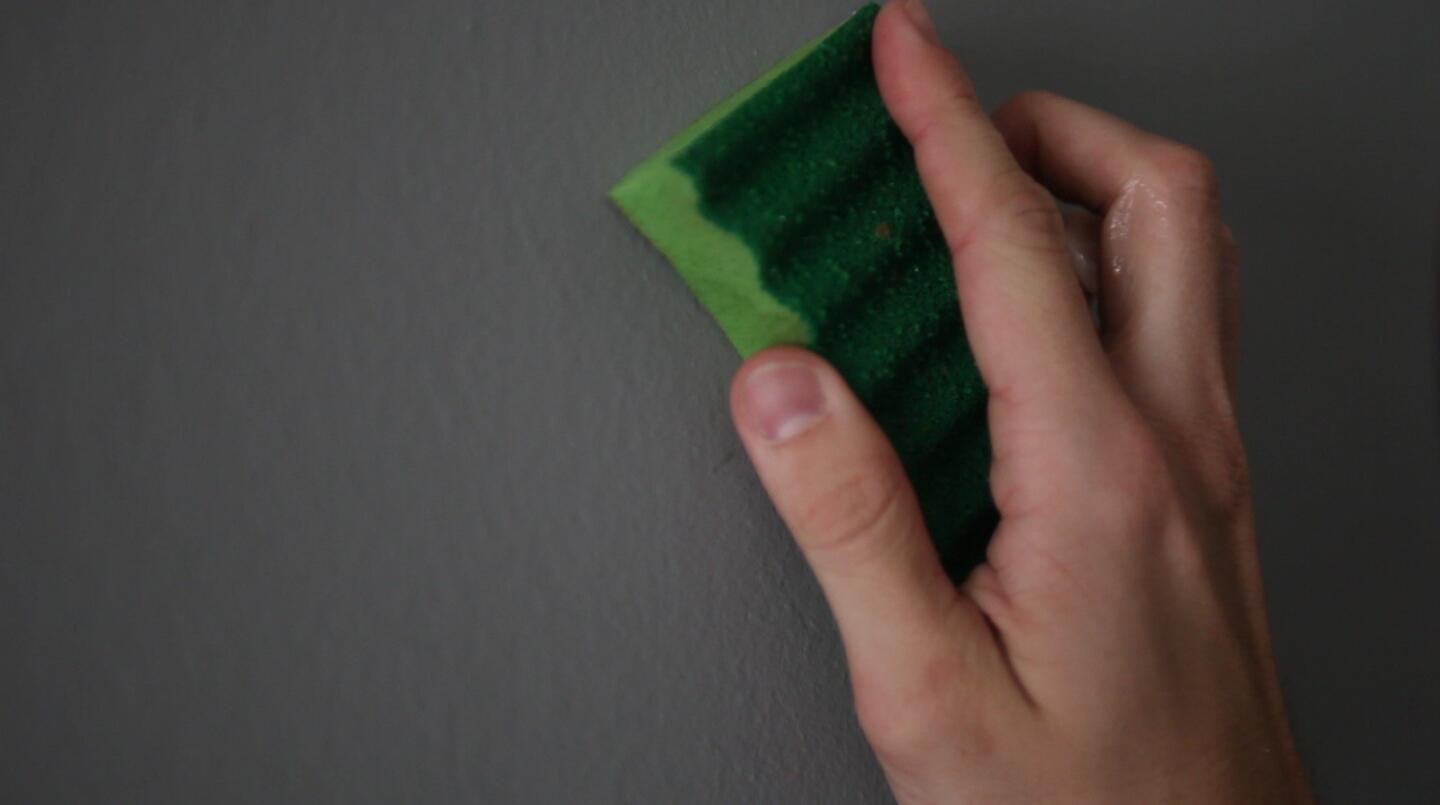
Remove any nails from your wall and wipe down the surface with a damp sponge to remove loose debris or dust. Let it dry for 30 minutes. (Bethany Mollenkof / Los Angeles Times)
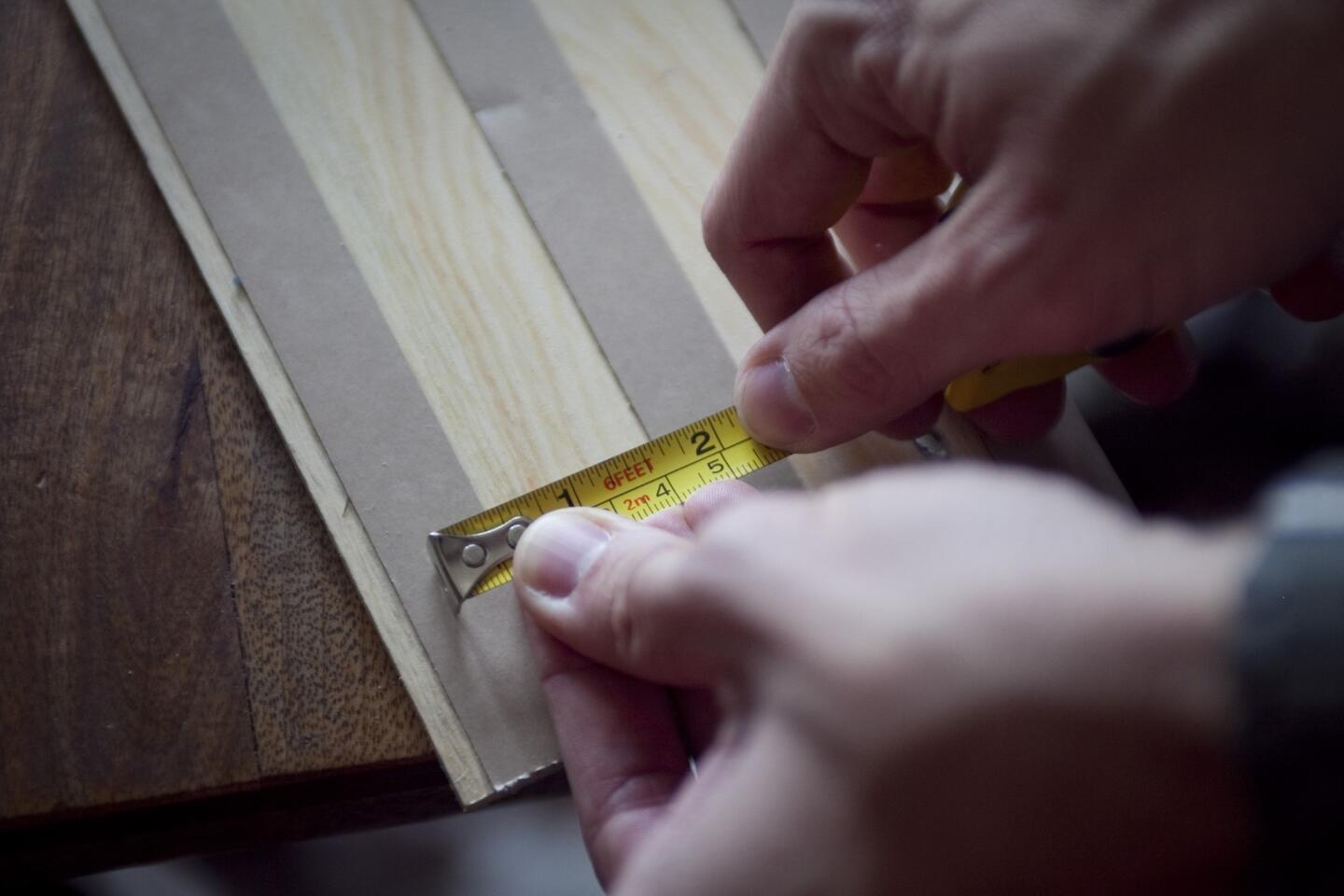
On the back of a Stikwood plank, measure the distance between the middle of one adhesive strip to the middle of the next strip (2 inches on my boards). Using a pencil and a level, draw lines the same distance apart across the width of the wall from ceiling to floor. (Bethany Mollenkof / Los Angeles Times)
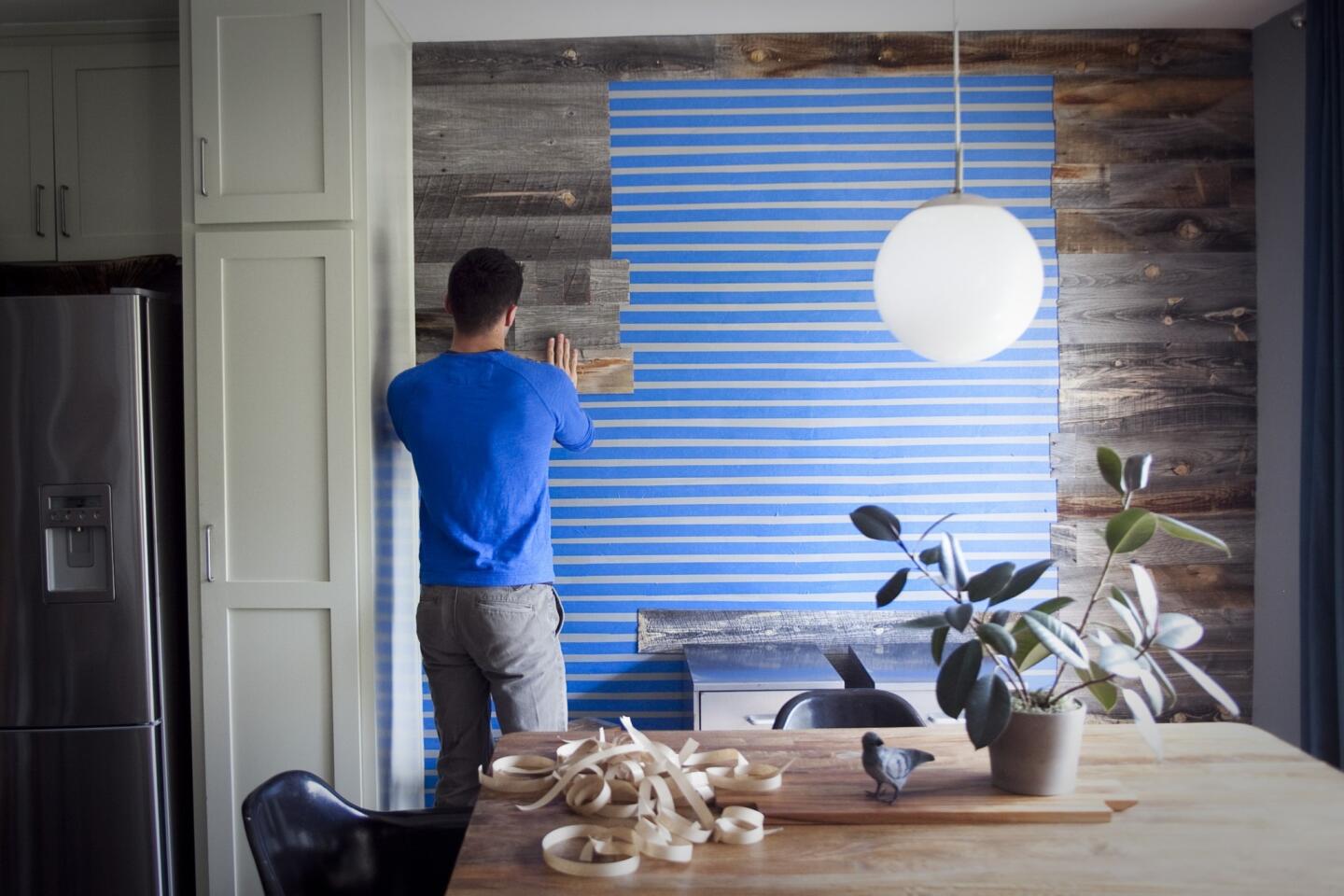
Now apply strips of 2-inch painter’s tape over the penciled-in lines across your wall. The finished wall will be horizontally striped with tape. (Bethany Mollenkof / Los Angeles Times)
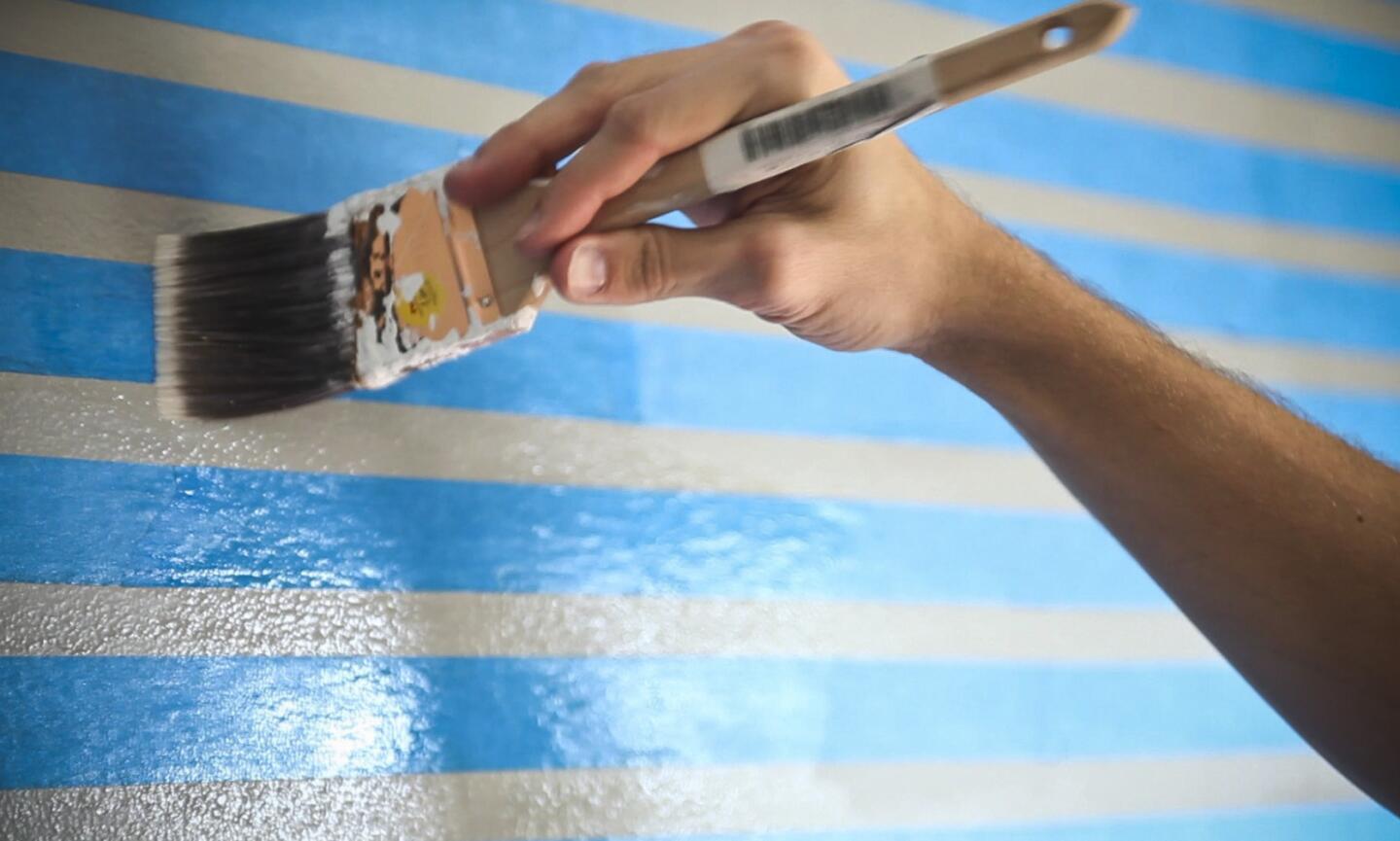
With a 2-inch foam brush, spread a thin layer of clear matte polyurethane over the edges of the tape to seal it to the wall, giving the tape stronger adhesion. (Bethany Mollenkof / Los Angeles Times)
Advertisement
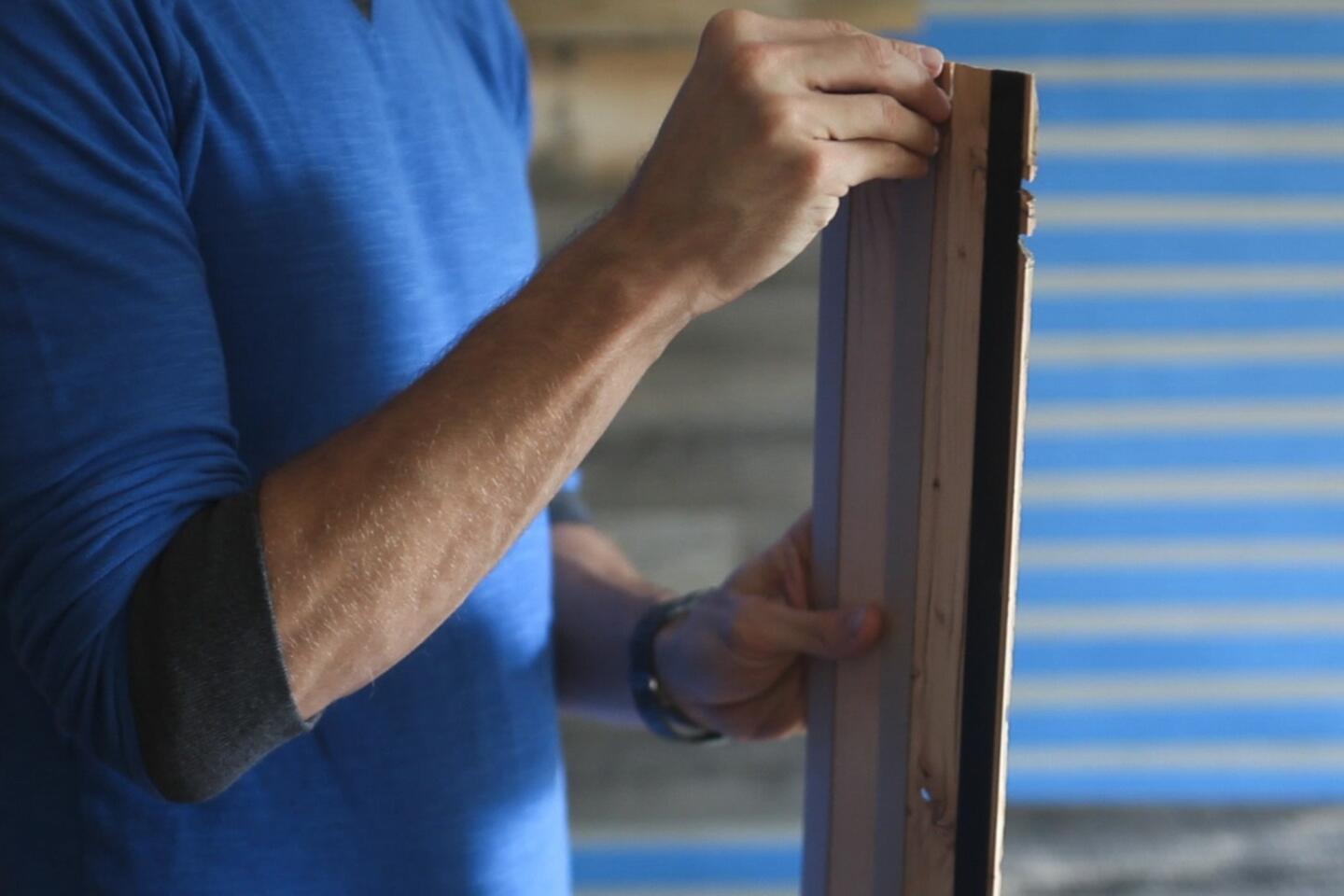
Peel the backing off the adhesive strips on a wood plank, align the strips with the tape on the wall and press the board to the wall. Repeat across and down the wall. (Bethany Mollenkof / Los Angeles Times)
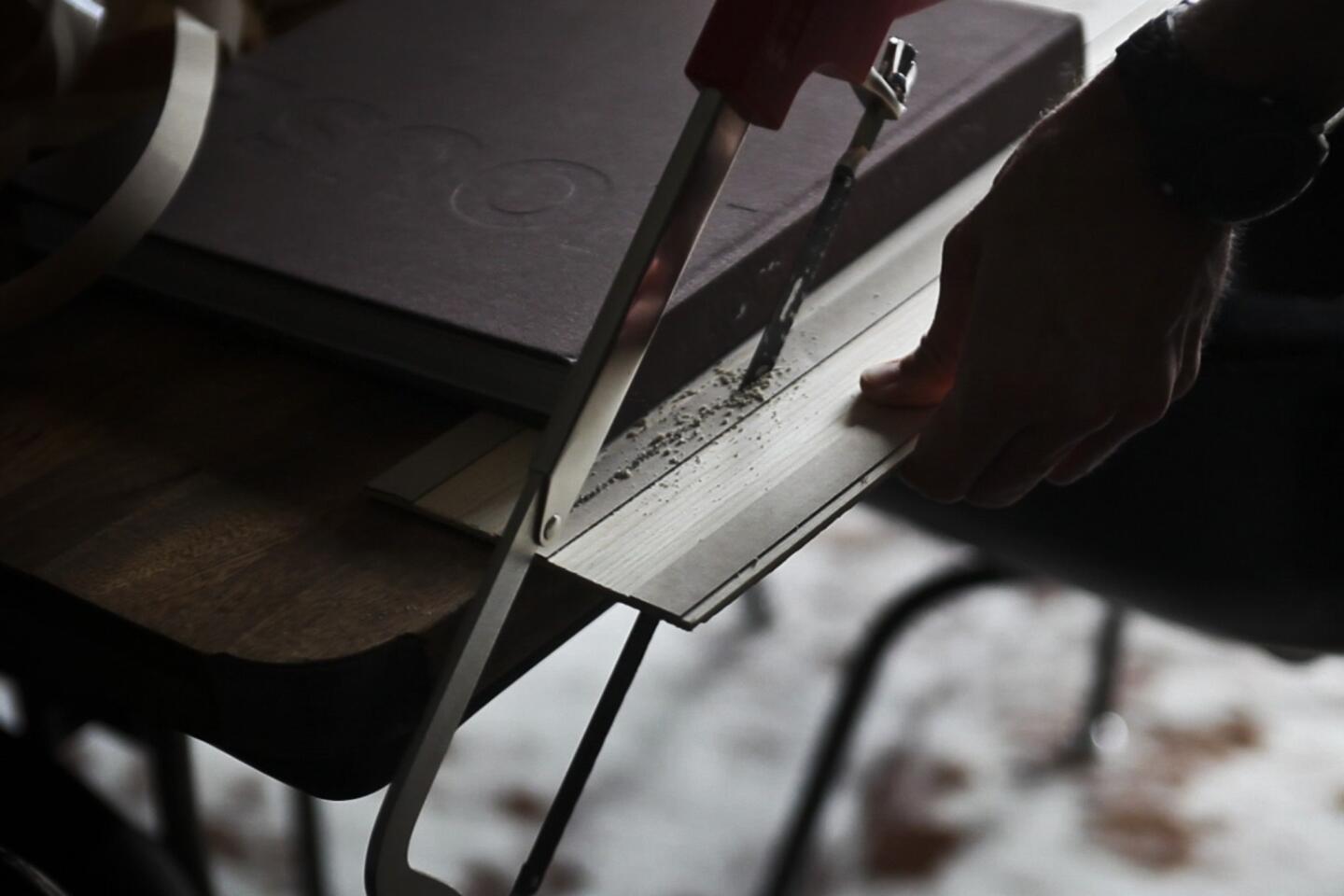
You’ll need to trim some of the boards to fit or to create the pattern you like. Though the company suggests using a miter saw or box, I found a hacksaw sufficient to cut the thin wood. I marked a line on the plank where I needed to make the cut and laid the plank on a table, letting the section to be trimmed hang off the edge. For more stability when cutting, I laid a heavy book on the board as a counterweight. (Bethany Mollenkof / Los Angeles Times)
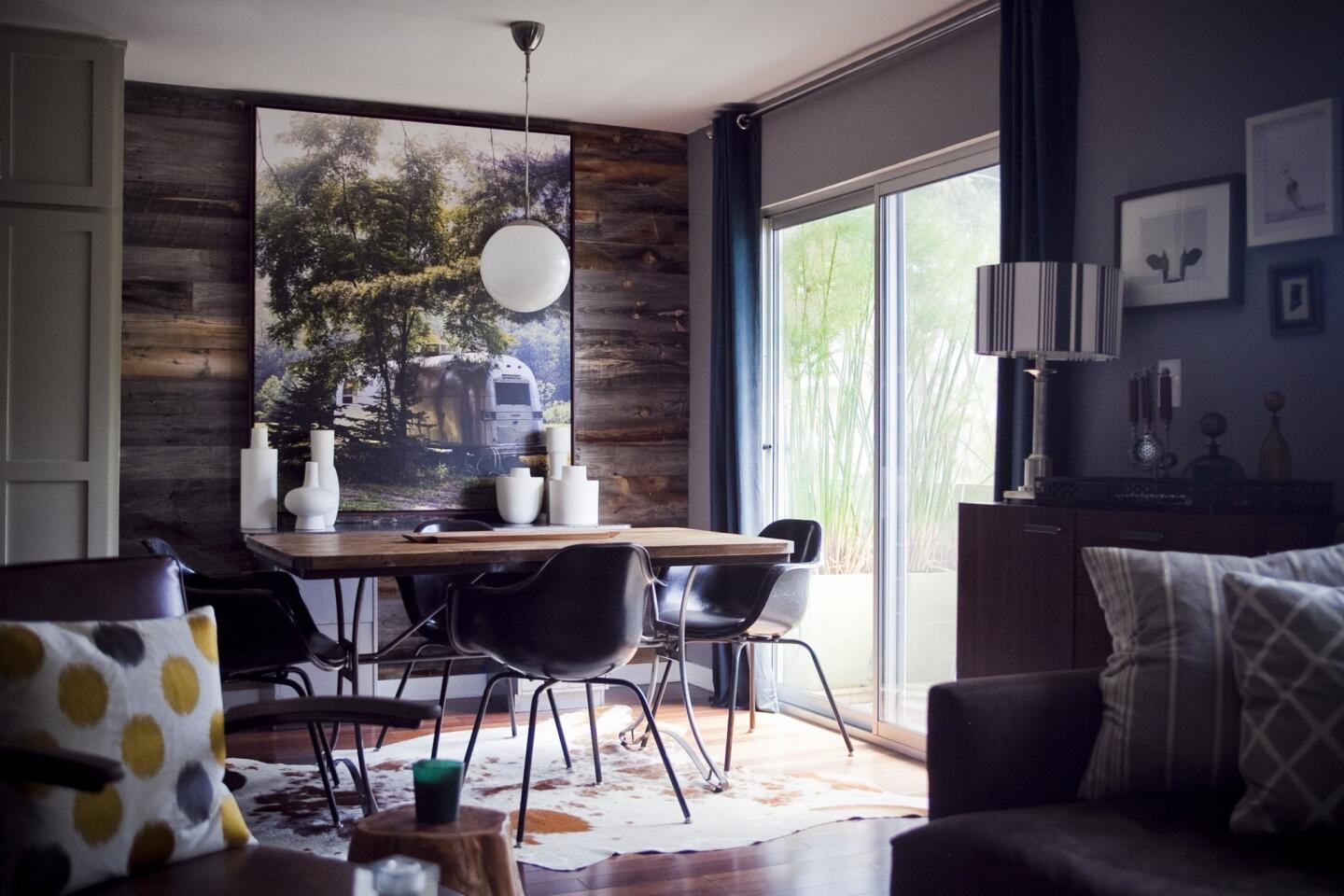
The removable paneling strips add architectural interest to the room. (Bethany Mollenkof / Los Angeles Times)



